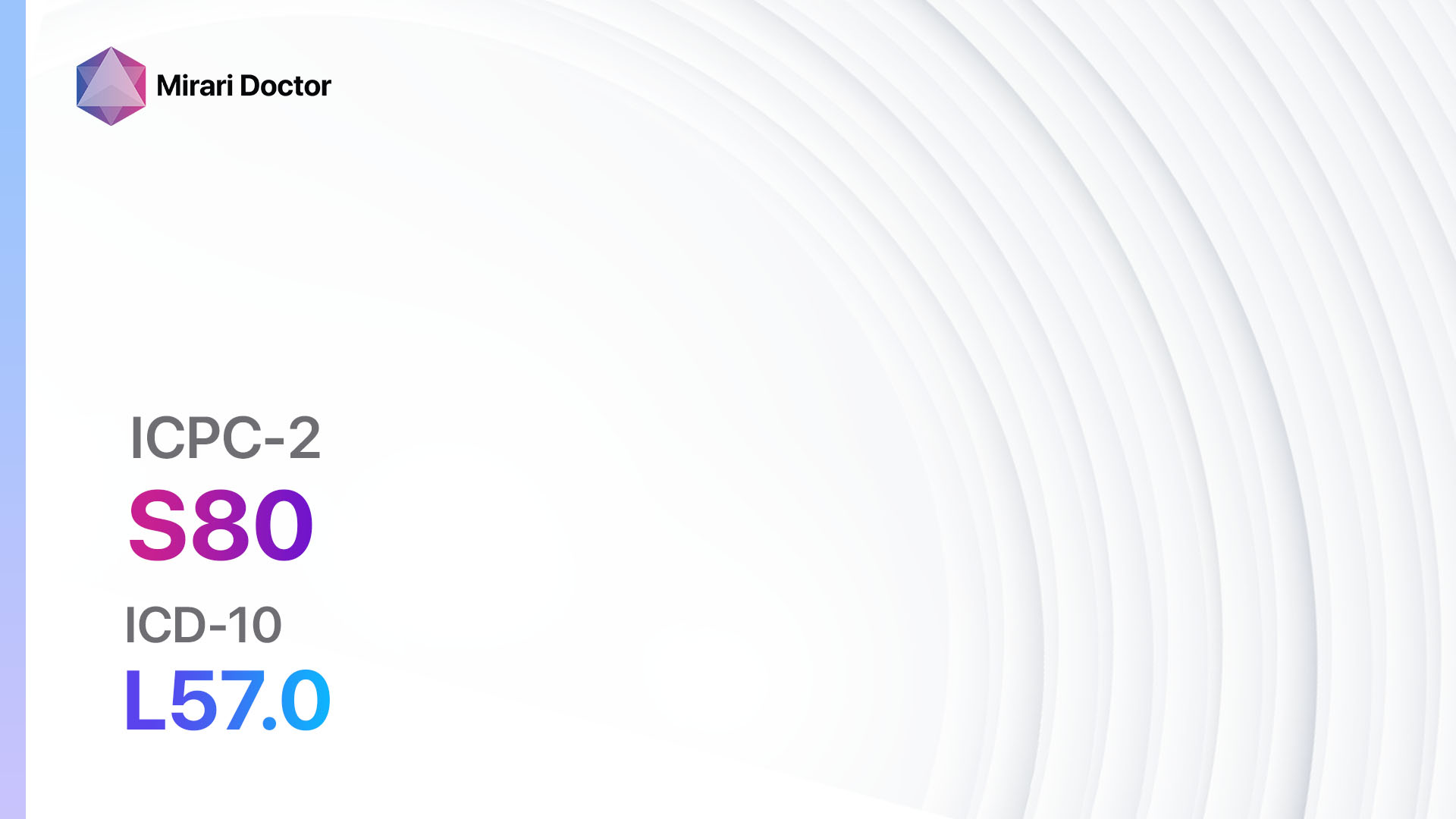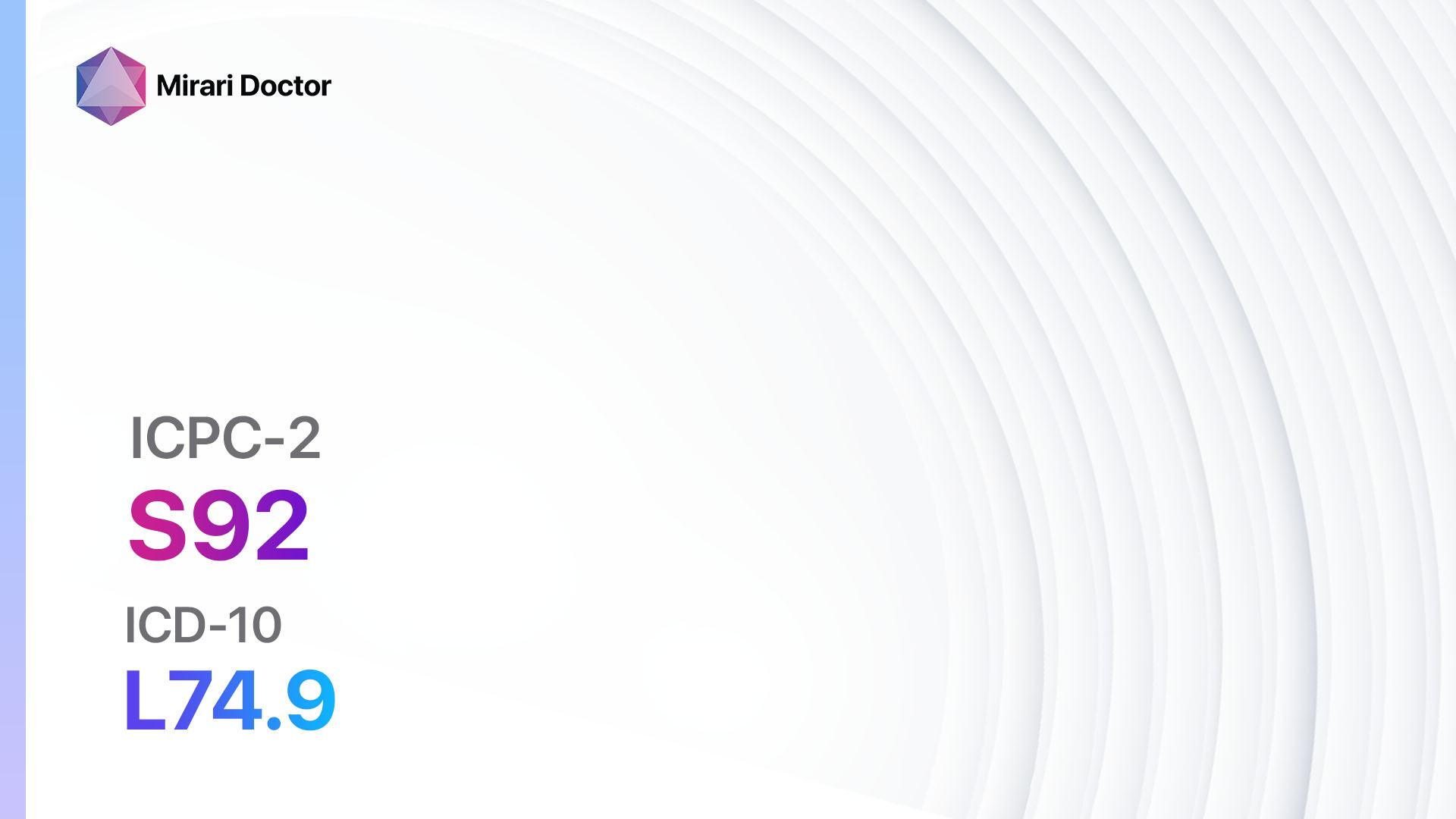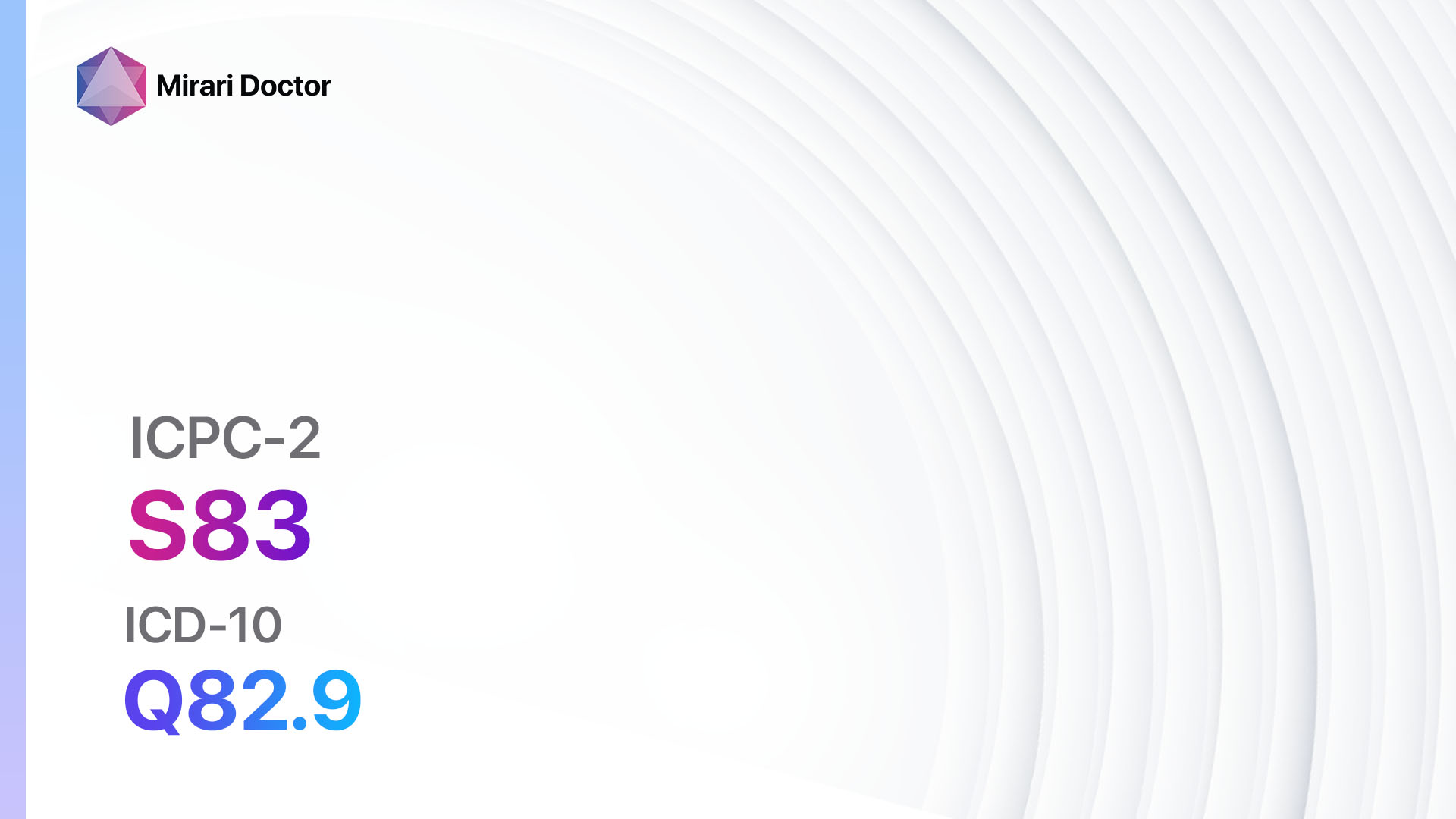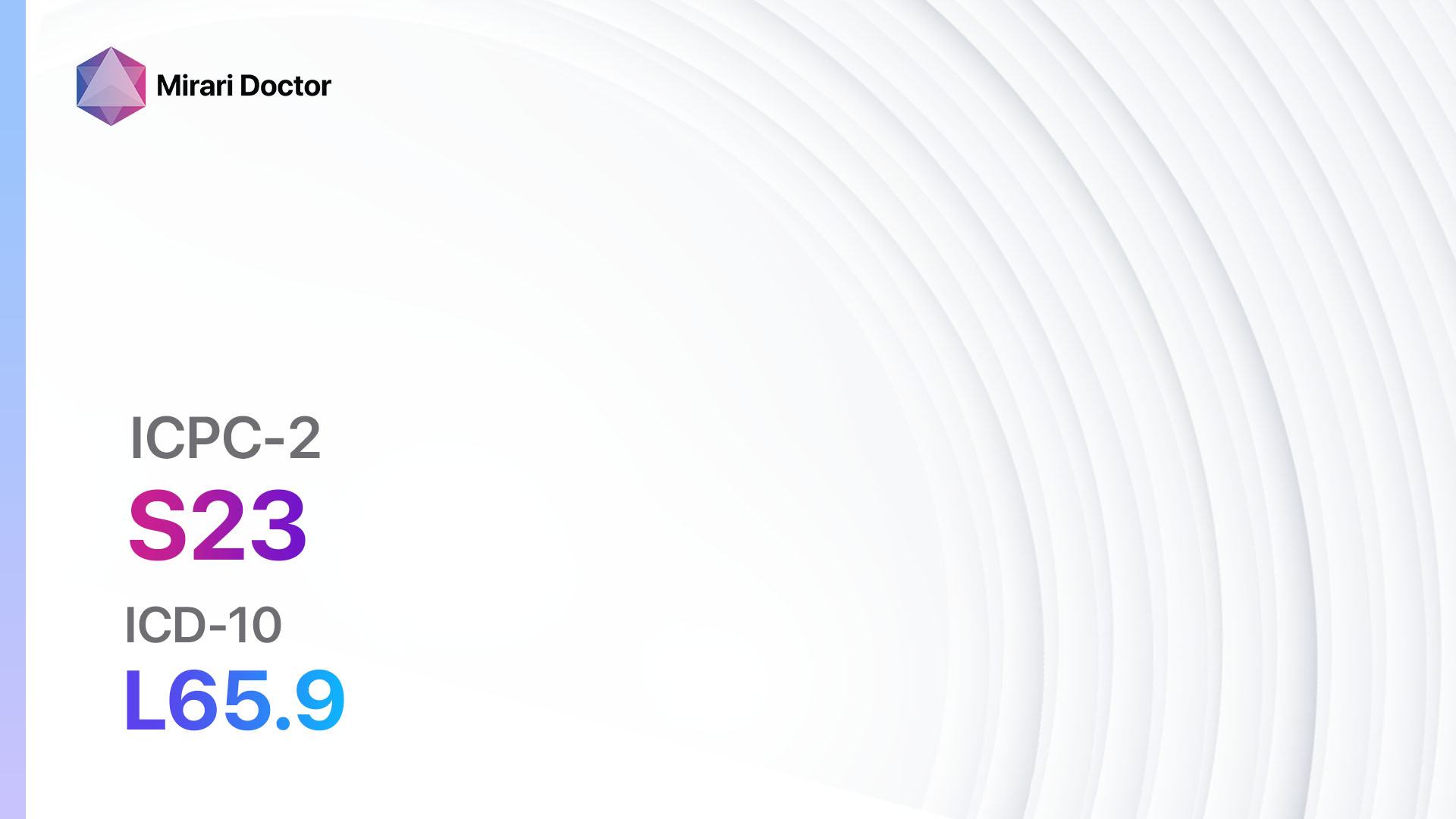
Introduction
Moniliasis, also known as candidiasis of the skin, is a fungal infection caused by the overgrowth of Candida species on the skin. It commonly affects areas of the body that are warm, moist, and prone to friction, such as the armpits, groin, and skin folds[1]. This guide aims to provide healthcare professionals with a comprehensive approach to diagnosing and managing moniliasis/candidiasis skin.
Codes
Symptoms
- Itching and redness of the affected skin
- Rash with well-defined borders
- Small, raised papules or pustules
- Burning or stinging sensation
- Scaling or flaking of the skin
- Cracking or oozing of the skin in severe cases[4]
Causes
- Overgrowth of Candida species, particularly Candida albicans, on the skin
- Warm and moist environments that promote fungal growth
- Weakened immune system
- Prolonged use of antibiotics or corticosteroids
- Diabetes or other medical conditions that increase blood sugar levels
- Obesity or excessive sweating
- Tight-fitting clothing or non-breathable fabrics[5]
Diagnostic Steps
Medical History
- Gather information about the patient’s symptoms, including the duration and progression of the rash.
- Inquire about any previous episodes of moniliasis or other fungal infections.
- Assess the patient’s risk factors, such as diabetes, obesity, or immunosuppression.
- Determine if the patient has any underlying medical conditions or is taking medications that may predispose them to fungal infections[6].
Physical Examination
- Inspect the affected skin for characteristic signs of moniliasis, such as redness, rash, and papules or pustules.
- Look for any satellite lesions, which are small lesions that develop around the main rash.
- Examine other areas of the body for signs of fungal infection, as moniliasis can spread to different areas.
- Assess the patient’s overall skin condition and hygiene[7].
Determine Severity
- Classify the severity of moniliasis based on the extent and depth of the rash:
- Mild: Limited involvement of a small area of skin.
- Moderate: Involvement of multiple areas or larger skin surfaces.
- Severe: Extensive involvement with deep skin involvement or systemic symptoms[8].
Laboratory Tests
- Microscopic examination of skin scrapings or swabs: Can reveal the presence of Candida species and help confirm the diagnosis.
- Fungal culture: May be performed if the diagnosis is uncertain or if the infection is severe or recurrent.
- Blood tests: Can be done to assess the patient’s immune status and rule out underlying medical conditions, such as diabetes or immunosuppression[9].
Diagnostic Imaging
- Diagnostic imaging is not typically necessary for the diagnosis of moniliasis/candidiasis skin and can be skipped.
Other Tests
- KOH (potassium hydroxide) test: A simple and quick test that involves mixing skin scrapings with KOH solution to dissolve skin cells and reveal fungal elements.
- Patch testing: May be considered if there is suspicion of contact dermatitis or an allergic reaction to topical antifungal medications[10].
Follow-up and Patient Education
- Schedule a follow-up appointment to assess the patient’s response to treatment and monitor for any complications or recurrence.
- Educate the patient about proper hygiene practices, such as keeping the affected areas clean and dry, wearing loose-fitting clothing, and avoiding irritants or allergens.
- Emphasize the importance of completing the full course of treatment and avoiding self-medication or over-the-counter antifungal creams without medical advice.
Possible Interventions
Traditional Interventions
Medications:
Top 5 drugs for Moniliasis/Candidiasis skin:
- Clotrimazole (e.g., Lotrimin, Canesten):
- Cost: $5-$15 for a tube of cream or lotion.
- Contraindications: Hypersensitivity to clotrimazole or other azole antifungals.
- Side effects: Mild skin irritation, burning, or itching.
- Severe side effects: Rare, but may include severe allergic reactions.
- Drug interactions: Minimal systemic absorption, so drug interactions are unlikely.
- Warning: Avoid contact with eyes or mucous membranes.
- Miconazole (e.g., Monistat, Micatin):
- Cost: $5-$15 for a tube of cream or lotion.
- Contraindications: Hypersensitivity to miconazole or other azole antifungals.
- Side effects: Mild skin irritation, burning, or itching.
- Severe side effects: Rare, but may include severe allergic reactions.
- Drug interactions: Minimal systemic absorption, so drug interactions are unlikely.
- Warning: Avoid contact with eyes or mucous membranes.
- Terbinafine (e.g., Lamisil):
- Cost: $10-$20 for a tube of cream or gel.
- Contraindications: Hypersensitivity to terbinafine or other allylamine antifungals.
- Side effects: Mild skin irritation, burning, or itching.
- Severe side effects: Rare, but may include severe allergic reactions or liver toxicity.
- Drug interactions: Minimal systemic absorption, so drug interactions are unlikely.
- Warning: Rare cases of liver failure have been reported with oral terbinafine.
- Ketoconazole (e.g., Nizoral):
- Cost: $10-$20 for a bottle of shampoo or a tube of cream.
- Contraindications: Hypersensitivity to ketoconazole or other azole antifungals.
- Side effects: Mild skin irritation, burning, or itching.
- Severe side effects: Rare, but may include severe allergic reactions or liver toxicity.
- Drug interactions: Can interact with certain medications, such as warfarin or cisapride.
- Warning: Oral ketoconazole is associated with a risk of liver toxicity and is not recommended for the treatment of moniliasis/candidiasis skin.
- Econazole (e.g., Spectazole):
- Cost: $10-$20 for a tube of cream or lotion.
- Contraindications: Hypersensitivity to econazole or other azole antifungals.
- Side effects: Mild skin irritation, burning, or itching.
- Severe side effects: Rare, but may include severe allergic reactions.
- Drug interactions: Minimal systemic absorption, so drug interactions are unlikely.
- Warning: Avoid contact with eyes or mucous membranes.
Alternative Drugs:
- Nystatin (e.g., Mycostatin): An antifungal medication available as a cream, ointment, or powder. Cost: $5-$15.
- Ciclopirox (e.g., Loprox): An antifungal medication available as a cream or gel. Cost: $10-$20.
- Amphotericin B (e.g., Fungizone): An antifungal medication available as a cream or lotion. Cost: $20-$50.
- Fluconazole (e.g., Diflucan): An oral antifungal medication used for severe or recurrent cases. Cost: $10-$30 for a single dose.
Surgical Procedures:
- Surgical procedures are not typically necessary for the treatment of moniliasis/candidiasis skin and can be skipped.
Alternative Interventions
- Tea tree oil: Has antifungal properties and can be applied topically. Cost: $5-$15 for a bottle.
- Coconut oil: Has antifungal properties and can be applied topically. Cost: $5-$10 for a jar.
- Probiotics: May help restore the balance of microorganisms on the skin. Cost: $10-$30 for a bottle of oral probiotics.
- Aloe vera gel: Has soothing and healing properties. Cost: $5-$15 for a bottle of gel.
Lifestyle Interventions
- Keep the affected areas clean and dry.
- Avoid wearing tight-fitting clothing or non-breathable fabrics.
- Use a mild, fragrance-free soap and avoid harsh cleansers or irritants.
- Change out of wet or sweaty clothing promptly.
- Maintain a healthy weight and manage underlying medical conditions, such as diabetes or obesity.
It is important to note that the cost ranges provided are approximate and may vary depending on the location and availability of the interventions.
Mirari Cold Plasma Alternative Intervention
Understanding Mirari Cold Plasma
- Safe and Non-Invasive Treatment: Mirari Cold Plasma is a safe and non-invasive treatment option for various skin conditions. It does not require incisions, minimizing the risk of scarring, bleeding, or tissue damage.
- Efficient Extraction of Foreign Bodies: Mirari Cold Plasma facilitates the removal of foreign bodies from the skin by degrading and dissociating organic matter, allowing easier access and extraction.
- Pain Reduction and Comfort: Mirari Cold Plasma has a local analgesic effect, providing pain relief during the treatment, making it more comfortable for the patient.
- Reduced Risk of Infection: Mirari Cold Plasma has antimicrobial properties, effectively killing bacteria and reducing the risk of infection.
- Accelerated Healing and Minimal Scarring: Mirari Cold Plasma stimulates wound healing and tissue regeneration, reducing healing time and minimizing the formation of scars.
Mirari Cold Plasma Prescription
Video instructions for using Mirari Cold Plasma Device – S75 Moniliasis/candidiasis skin (ICD-10:B37.2)
| Mild | Moderate | Severe |
| Mode setting: 1 (Infection) Location: 0 (Localized) Morning: 15 minutes, Evening: 15 minutes | Mode setting: 1 (Infection) Location: 0 (Localized) Morning: 30 minutes, Lunch: 30 minutes, Evening: 30 minutes | Mode setting: 1 (Infection) Location: 0 (Localized) Morning: 30 minutes, Lunch: 30 minutes, Evening: 30 minutes |
| Mode setting: 2 (Wound Healing) Location: 0 (Localized) Morning: 15 minutes, Evening: 15 minutes | Mode setting: 2 (Wound Healing) Location: 0 (Localized) Morning: 30 minutes, Lunch: 30 minutes, Evening: 30 minutes | Mode setting: 2 (Wound Healing) Location: 0 (Localized) Morning: 30 minutes, Lunch: 30 minutes, Evening: 30 minutes |
| Mode setting: 10 (Dermatitis/Fungus) Location: 0 (Localized) Morning: 15 minutes, Evening: 15 minutes | Mode setting: 10 (Dermatitis/Fungus) Location: 0 (Localized) Morning: 30 minutes, Lunch: 30 minutes, Evening: 30 minutes | Mode setting: 10 (Dermatitis/Fungus) Location: 0 (Localized) Morning: 30 minutes, Lunch: 30 minutes, Evening: 30 minutes |
| Total Morning: 45 minutes approx. $7.50 USD, Evening: 45 minutes approx. $7.50 USD | Total Morning: 90 minutes approx. $15 USD, Lunch: 90 minutes approx. $15 USD, Evening: 90 minutes approx. $15 USD | Total Morning: 90 minutes approx. $15 USD, Lunch: 90 minutes approx. $15 USD, Evening: 90 minutes approx. $15 USD |
| Usual treatment for 7-60 days approx. $105 USD – $900 USD | Usual treatment for 6-8 weeks approx. $1,890 USD – $2,520 USD | Usual treatment for 3-6 months approx. $4,050 USD – $8,100 USD |
 |
|
Use the Mirari Cold Plasma device to treat Moniliasis/candidiasis skin effectively.
WARNING: MIRARI COLD PLASMA IS DESIGNED FOR THE HUMAN BODY WITHOUT ANY ARTIFICIAL OR THIRD PARTY PRODUCTS. USE OF OTHER PRODUCTS IN COMBINATION WITH MIRARI COLD PLASMA MAY CAUSE UNPREDICTABLE EFFECTS, HARM OR INJURY. PLEASE CONSULT A MEDICAL PROFESSIONAL BEFORE COMBINING ANY OTHER PRODUCTS WITH USE OF MIRARI.
Step 1: Cleanse the Skin
- Start by cleaning the affected area of the skin with a gentle cleanser or mild soap and water. Gently pat the area dry with a clean towel.
Step 2: Prepare the Mirari Cold Plasma device
- Ensure that the Mirari Cold Plasma device is fully charged or has fresh batteries as per the manufacturer’s instructions. Make sure the device is clean and in good working condition.
- Switch on the Mirari device using the power button or by following the specific instructions provided with the device.
- Some Mirari devices may have adjustable settings for intensity or treatment duration. Follow the manufacturer’s instructions to select the appropriate settings based on your needs and the recommended guidelines.
Step 3: Apply the Device
- Place the Mirari device in direct contact with the affected area of the skin. Gently glide or hold the device over the skin surface, ensuring even coverage of the area experiencing.
- Slowly move the Mirari device in a circular motion or follow a specific pattern as indicated in the user manual. This helps ensure thorough treatment coverage.
Step 4: Monitor and Assess:
- Keep track of your progress and evaluate the effectiveness of the Mirari device in managing your Moniliasis/candidiasis skin. If you have any concerns or notice any adverse reactions, consult with your health care professional.
Note
This guide is for informational purposes only and should not replace the advice of a medical professional. Always consult with your healthcare provider or a qualified medical professional for personal advice, diagnosis, or treatment. Do not solely rely on the information presented here for decisions about your health. Use of this information is at your own risk. The authors of this guide, nor any associated entities or platforms, are not responsible for any potential adverse effects or outcomes based on the content.
Mirari Cold Plasma System Disclaimer
- Purpose: The Mirari Cold Plasma System is a Class 2 medical device designed for use by trained healthcare professionals. It is registered for use in Thailand and Vietnam. It is not intended for use outside of these locations.
- Informational Use: The content and information provided with the device are for educational and informational purposes only. They are not a substitute for professional medical advice or care.
- Variable Outcomes: While the device is approved for specific uses, individual outcomes can differ. We do not assert or guarantee specific medical outcomes.
- Consultation: Prior to utilizing the device or making decisions based on its content, it is essential to consult with a Certified Mirari Tele-Therapist and your medical healthcare provider regarding specific protocols.
- Liability: By using this device, users are acknowledging and accepting all potential risks. Neither the manufacturer nor the distributor will be held accountable for any adverse reactions, injuries, or damages stemming from its use.
- Geographical Availability: This device has received approval for designated purposes by the Thai and Vietnam FDA. As of now, outside of Thailand and Vietnam, the Mirari Cold Plasma System is not available for purchase or use.
References
- Havlickova B, Czaika VA, Friedrich M. Epidemiological trends in skin mycoses worldwide. Mycoses. 2008;51 Suppl 4:2-15.
- World Organization of Family Doctors (WONCA). International Classification of Primary Care, 2nd edition (ICPC-2).
- World Health Organization. International Statistical Classification of Diseases and Related Health Problems 10th Revision (ICD-10)-WHO Version for 2019.
- Ely JW, Rosenfeld S, Seabury Stone M. Diagnosis and management of tinea infections. Am Fam Physician. 2014;90(10):702-710.
- Nenoff P, Krüger C, Ginter-Hanselmayer G, Tietz HJ. Mycology – an update. Part 1: Dermatomycoses: causative agents, epidemiology and pathogenesis. J Dtsch Dermatol Ges. 2014;12(3):188-209.
- Sahoo AK, Mahajan R. Management of tinea corporis, tinea cruris, and tinea pedis: A comprehensive review. Indian Dermatol Online J. 2016;7(2):77-86.
- Hay RJ. Tinea Capitis: Current Status. Mycopathologia. 2017;182(1-2):87-93.
- Rouzaud C, Hay R, Chosidow O, et al. Severe dermatophytosis and acquired or innate immunodeficiency: a review. J Fungi (Basel). 2015;2(1):4.
- Gupta AK, Versteeg SG, Shear NH. Onychomycosis in the 21st Century: An Update on Diagnosis, Epidemiology, and Treatment. J Cutan Med Surg. 2017;21(6):525-539.
- Piraccini BM, Alessandrini A. Onychomycosis: A Review. J Fungi (Basel). 2015;1(1):30-43.
Related articles
Made in USA



























